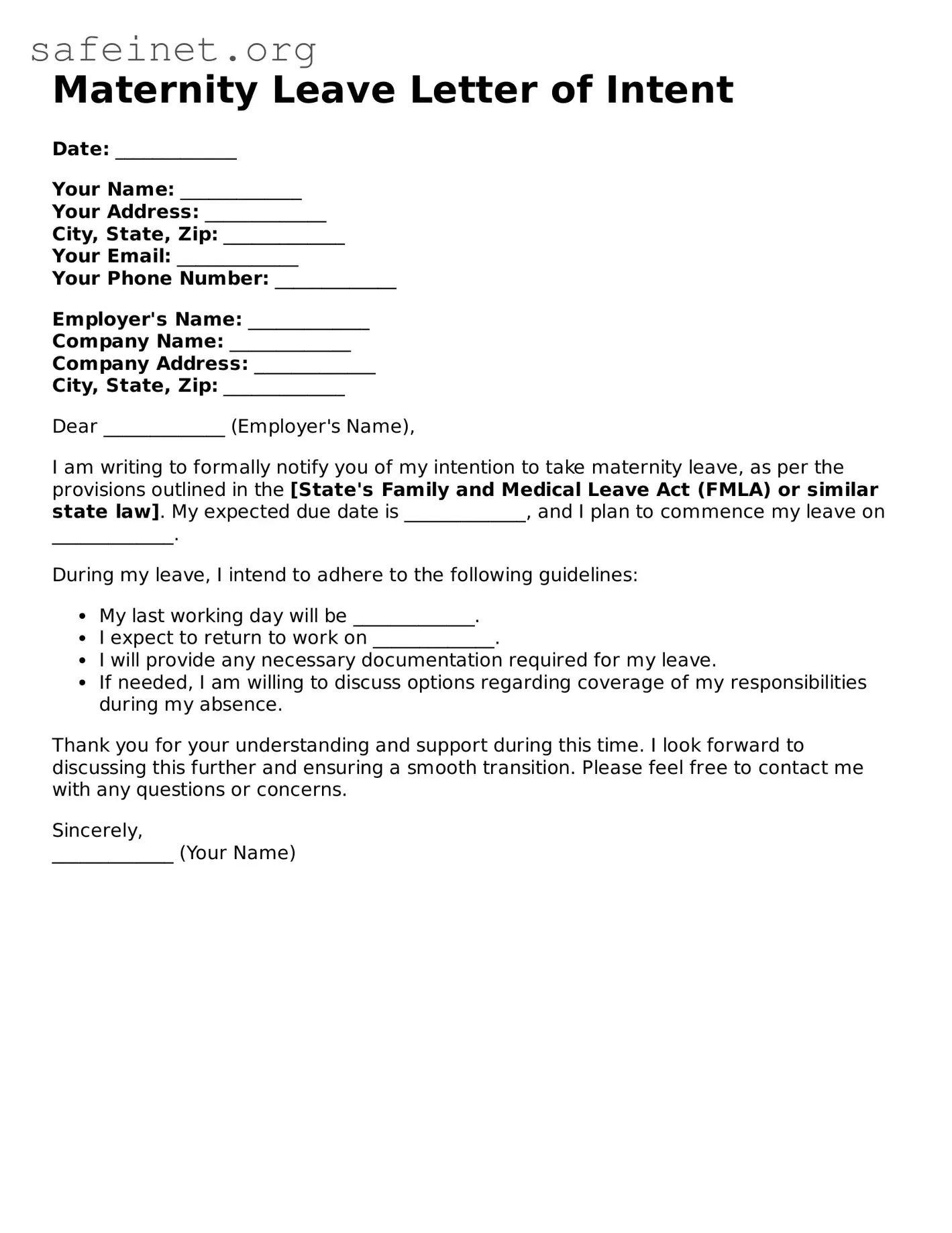Maternity Leave Letter of Intent
Date: _____________
Your Name: _____________
Your Address: _____________
City, State, Zip: _____________
Your Email: _____________
Your Phone Number: _____________
Employer's Name: _____________
Company Name: _____________
Company Address: _____________
City, State, Zip: _____________
Dear _____________ (Employer's Name),
I am writing to formally notify you of my intention to take maternity leave, as per the provisions outlined in the [State's Family and Medical Leave Act (FMLA) or similar state law]. My expected due date is _____________, and I plan to commence my leave on _____________.
During my leave, I intend to adhere to the following guidelines:
- My last working day will be _____________.
- I expect to return to work on _____________.
- I will provide any necessary documentation required for my leave.
- If needed, I am willing to discuss options regarding coverage of my responsibilities during my absence.
Thank you for your understanding and support during this time. I look forward to discussing this further and ensuring a smooth transition. Please feel free to contact me with any questions or concerns.
Sincerely,
_____________ (Your Name)
